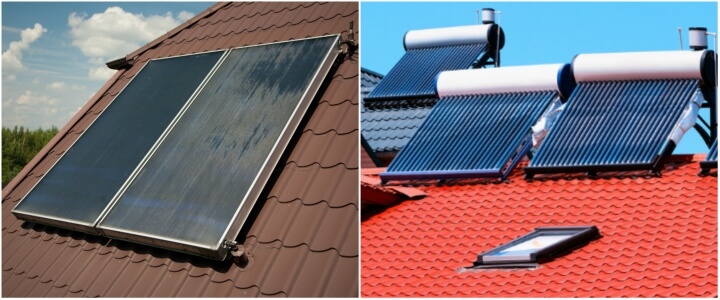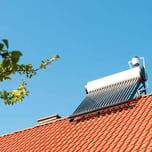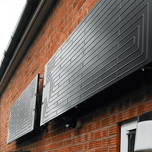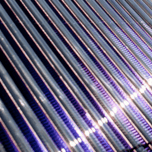
Get up to 4 quotes by filling in only 1 quick form

Slash your energy bills by installing solar panels

We’ve helped over 500,000 homeowners reduce their carbon footprint
- GreenMatch
- Solar Energy
- Solar Thermal
- Solar Thermal Panels
Solar Thermal Panels

As the world transitions towards renewable energy sources, solar thermal panels are one of the top options for heating homes.
In this article, we'll explore the benefits of solar thermal panels, how they work, and more.
However, if you already know that solar thermal panels are a perfect match for your home and simply need to find a reliable installer, then we can help you with that too.
At GreenMatch, we have an extensive network of qualified solar panel installers across the UK. We can send you up to 3 free quotes from installers in your area. This way, you don't have to waste hours of your time researching installers one by one and can easily select the best deal.
Click the button below to get your free quotes now and have your solar panels installed in no time.
- Quotes from local engineers
- Payment by finance available
- Save up to £1005 per year
It only takes 30 seconds



What Are Solar Thermal Panels?
You probably know that solar energy can be turned into electricity by using solar panels, but there’s another popular application to the sun’s power. Solar thermal technologies, in fact, turn sunlight into heat instead of power and were actually the first solar energy products to be commercialised in the UK.
Just like solar PV, solar thermal panels help you reduce your carbon footprint and save on your monthly bills by covering your heating needs using a completely free, renewable energy source.
Benefits of Solar Thermal Panels
While solar PV panels are much more popular and you’ve probably heard about all of their benefits, you should know that solar thermal panels also come with great advantages:
- They are actually more efficient than PV panels, because heat waves carry more energy than sunlight, and because there is no process of transformation into electricity.
- They are cheaper and thus have a shorter payback period than PV panels.
- They work in cold climates, overcast weather and strong wind, and incorporate an energy storage system.
- Most systems come with a 5-10 year warranty but they last much longer up to 25 years. Moreover, they require little to no maintenance, so the only expense you’ll have to worry about is the installation cost.
- Solar thermal panels can help you save up to 600 kg of carbon dioxide emissions in a year.
- You will be eligible for yearly payments under the Renewable Heat Incentive (RHI), depending on the size of the household and the installation.
How Do Solar Thermal Panels Work?
Solar thermal panels or solar collectors are devices that are mounted on your roof to absorb the sun’s heat and use it to heat up water, stored in a cylinder. The liquid flowing through the panels is a mix of water and antifreeze. The main purposes of this technology are space and water heating, and they’re a very popular solution for swimming pool heating. There are two main types of solar thermal panels:
- Flat-plate collectors: these devices look very much like solar PV panels. They are composed of a dark absorbing surface, a transparent cover, a heat insulating backing and, most importantly, a fluid that transports heat from the absorber to a water tank. The absorber can be made of different materials, namely polymers, copper, aluminium or steel. Copper is the most expensive, but it’s also a better, more durable conductor. Polymer collectors are indicated for colder climate since materials such as silicon are much more freeze-tolerant than metal.
- Evacuated (or vacuum) tube collectors: unlike solar panels, these collectors are made up of several glass tubes through which the transfer fluid flows. These systems are more efficient than flat-plate panels, especially in cold climates, but lose efficiency in warm weather due to the risk of overheating. That is because vacuum tubes avoid heat loss, while flat panels tend to lose some heat. The evacuated tube structure, with gaps between the tubes, allows snow to fall down and thus minimises its impact on efficiency since the lack of radiated heat makes it impossible for the snow to melt.
How Much Can You Save?
Heating expenses take a big portion of your monthly bills. Solar thermal systems can provide enough heat to cover all of your needs during the summer months and make a considerable difference in the rest of the year.
On average, such a system will provide 60% of your hot water needs, and more if you slightly change your daily habits to decrease consumption. Installation prices vary between £3000 and £6000, and the Renewable Heat Incentive helps pay back the investment with quarterly payments over 7 years (the current RHI rate is 19.2p per kWh). Solar thermal panels will save you around 10% on energy bills, and savings will increase over time as energy prices rise. More on this can be found in our 'Is it worth getting solar panels?' guide.
Considering the long lifespan of these systems (up to 25 years) and the steady rise in electricity and gas prices, you’d be looking at even greater savings in the future. However, you should consider installing solar thermal panels primarily because of the big difference you can make in terms of environmental impact.
Is Your House Ready for Solar Thermal Panels?
Just like solar PV, solar thermal panels work best if your roof is south-facing, but will still be effective on south-west and south-east facing roofs. Moreover, you can choose to install them on the ground instead of the roof if it isn’t suitable, as long as they get direct, unshaded sunlight.
There are a few more things you should consider before making the investment. For instance, electric showers and cold-fill washing machines/dishwashers are not compatible with solar water heating. You will also need a new cylinder, so installing a solar thermal system is especially recommended if you have to replace your existing cylinder or fixing your roof. If that is not possible, you may consider buying a thermodynamic panel which can be retrofitted on any cylinder.
Solar thermal panels should occupy between 1 and 2 m2 of roof or ground space per each person in the household and have an inclination between 20 and 50 degrees.
Are You Interested in Investing in Solar Thermal?
If you think your house is suitable for solar thermal panels and you’re curious about how much it would cost you, you can request quotes by clicking the button below and filling in our short contact form. You will receive up to 3 personalised, non-binding quotes from our trusted suppliers, completely free of charge. This will spare you the long, tiring process of researching models, suppliers and installers.
- Quotes from local engineers
- Payment by finance available
- Save up to £1005 per year
It only takes 30 seconds



We strive to connect our customers with the right product and supplier. Would you like to be part of GreenMatch?





